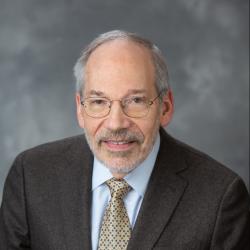What’s the latest in health policy research? The Essential Scan, produced by the USC-Brookings Schaeffer Initiative for Health Policy, aims to help keep you informed on the latest research and what it means for policymakers. If you’d like to receive the biweekly Essential Scan by email, you can sign up here.
Share of Generic Drugs that at Least Doubled in Price Increased Fourfold; Still Small Percentage of Generic Market
Study by: Geoffrey Joyce, Laura Henkhaus, Laura Gascue, and Julie Zissimopoulos
The generic drug market comprises about 90 percent of the prescriptions filled nationwide and has historically seemed to function quite well in that drug prices have tended to decrease over time and are often lower than those of other countries. Yet recent price hikes of decades-old generics have led many to question whether the market is still competitive. A recent study measured annual price changes from 2007 through 2013 using data from Medicare Part D and found that the fraction of generics that at least doubled in price grew from 1 percent in 2007 to 4.39 percent in 2013 even though prices in the market as a whole declined during the same time period. The authors of this study also found that these higher prices tended to persist for a number of years, suggesting a lack of competition in that class of drug. However, the authors found that patients are somewhat insulated from these changes because the majority of drugs with significant price hikes had low-to-medium base prices and changes in cost sharing for these drugs tended to increase much less than the market price of the drug. Given the study’s findings, the authors believe that the Federal Trade Commission (FTC) should more rigorously analyze mergers and takeovers of drug companies, and should redirect their focus to examining the potential effects on specific classes of drugs rather than the market as a whole. The researchers also recommend fast-tracking generic drug applications to the US Food and Drug Administration (FDA) when there is limited market competition as a solution to this problem. Full study here.
Providing Wraparound Services Lowered Hospitalization Rates, ED Usage, and Total Spending
Study by: Joshua R. Vest, Lisa E. Harris, Dawn P. Haut, Paul K. Halverson, and Nir Menachemi
As the benefits of value-based care and population health management become more salient to stakeholders in the US healthcare system, strategies designed to address the social and behavioral factors influencing patients’ health have become increasingly popular. One such strategy involves providing nonmedical services like dietary consultations, behavioral health counseling, and patient navigation assistance in conjunction with primary care. The aim of these nonmedical services, commonly referred to as “wraparound” services, is to address the social determinants of health that physicians are unable to treat directly. A recent study that followed the patients of a safety-net provider in Indianapolis, Indiana for 11 years found that patients who received a wraparound service saw a 7 percent reduction in hospitalizations and a 5 percent reduction in the number of ED visits in the following year. Avoiding these unnecessary hospitalizations yielded an estimated $1.4-$2.4 million– or $76-$131 per patient– in annual savings. These results suggest that the provision of wraparound services may be a useful strategy for both improving patient outcomes and lowering total costs. Full study here.
Physician-Induced Demand Responsible for Substantial Regional Variation in Utilization
Study by: Kevin Callison, Robert Kaestner, and Jason Ward
Regional variation in healthcare utilization is well documented, but there is debate as to whether this variation is due to supply or demand-side forces. New research attempts to answer this question by analyzing the shift in demand for healthcare when a person who is uninsured turns 65 and obtains coverage through Medicare. Researchers examine whether the change in healthcare utilization depends on the level of Medicare spending in that beneficiary’s region of residence. They found that gaining Medicare coverage in regions with higher spending increased the probability of a hospital visit by 36 percent and the probability of having more than five doctor visits by 25 percent when compared to similar individuals in lower-spending regions. The researchers conclude that a substantial part of geographic variation in Medicare spending is likely due to physician-induced demand, which they characterize as a market failure that allows healthcare providers to exercise influence over patients’ care decisions. Full study here.
The Brookings Institution is committed to quality, independence, and impact.
We are supported by a diverse array of funders. In line with our values and policies, each Brookings publication represents the sole views of its author(s).













Commentary
The essential scan: Top findings in health policy research
October 5, 2018